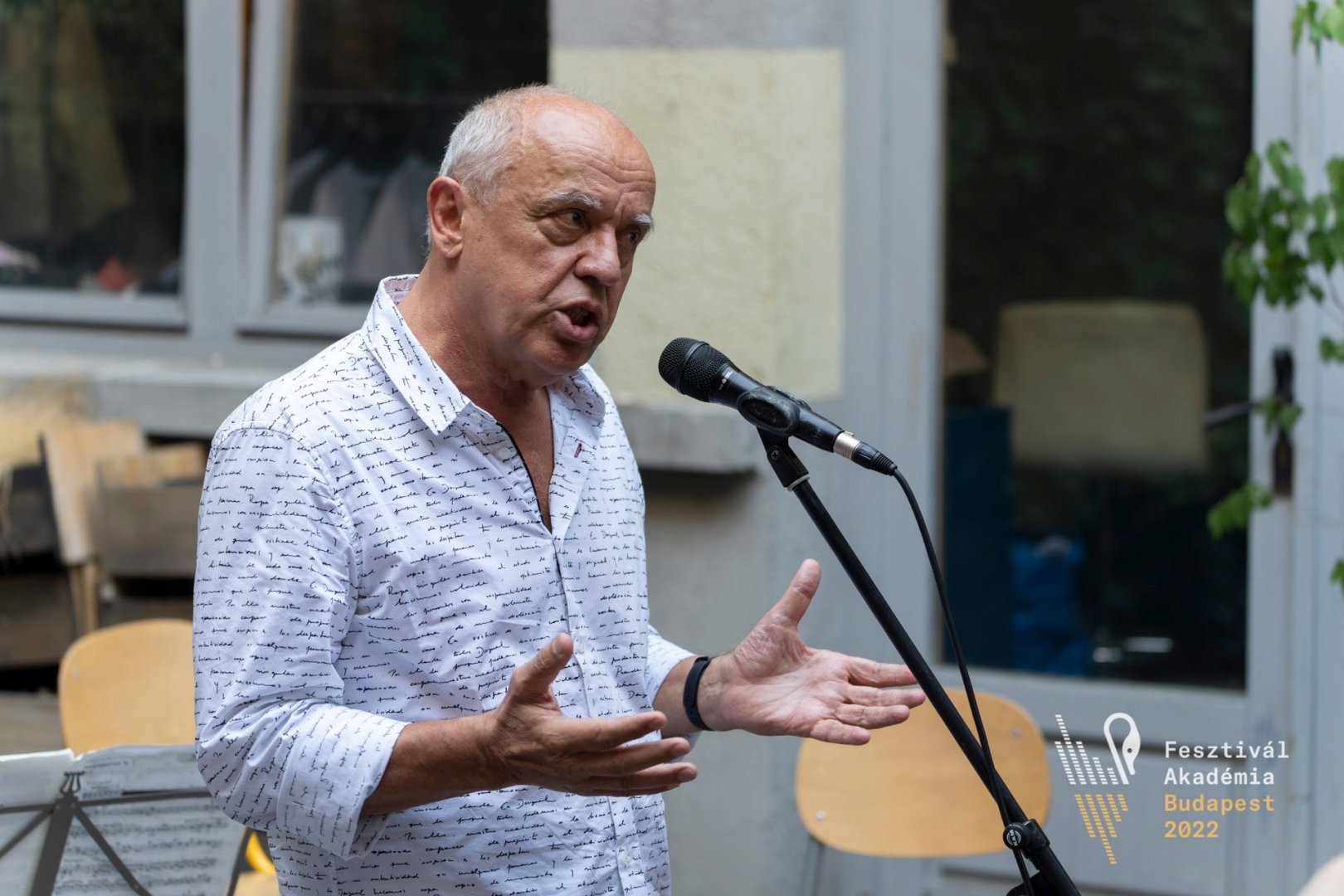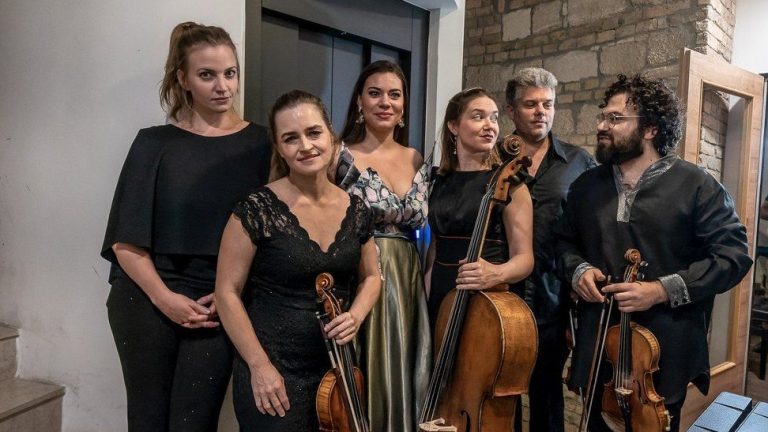To sold-out houses, the Festival Academy Budapest (FAB) again brought their unique brand of musical merry-making: a family affair that operates in fast-forward mode. the Kelemen family (Barnabás, Katalin Kokas, Dóra Kokas, children Gaspár and Hanna, and married-in member Maxim Rysanov), through dedication and knuckle-busting hard work, have been creating a successful summer treasure at the Liszt Academy for music lovers since 2016. This year, from 15-24 July, they again preached the heavenly gospel of heavenly chamber music.
Even dodging the covid menace last year, they still managed to present a star-studded festival at the Liszt Academy and elsewhere in the city, to rapturous applause. Their breath-taking schedule of events is typically a rollercoaster of masterclasses, concerts, a competition, and more, all of which turn the Academy into a musical beehive.
Audiences here are now entrained to go with the flow and expect the unexpected. As Barnabás writes in the program booklet: “The festival program sometimes changes from what was originally planned.” This year saw many last-minute changes, shifting of artists and venues, and unforeseen events (like cancelled airline flights) that could have shipwrecked the boat. The miracle of an online bulletin board gave us the updates, as FAB continued to spread the gospel of chamber music throughout the city’s concert halls, cafés, churches, historical buildings, and even in a flash-mob at the Széchenyi Spa.
Rewind…
As a music journalist, I arrived in Kaposvár in 2013 to report on the Kaposfest music festival, then directed by violinists/violists Barnabás and Katalin. It was my first time in Hungary, and I was totally entranced with what I saw and heard there. For this American, it was the first time my double-degree’d musically-educated brain heard works by Bartók, Dohnányi, Ligeti, and Kurtág that I never knew existed. I was so captivated, I wanted to return every summer. Fast-forward to 2016, when I made the decision to move to Budapest, based on the potential of hearing this specific musical heritage that was missing from my former education.
Fast-forward to 2022, and Barnabás and Katalin are deeply ensconced in their own mini-empire of chamber music based in the Liszt Academy, offering pedagogical events with students and teachers from all over the world, a performance competition with prizes, and concerts both day and night in small to large venues in the city. This year, they’ve also partnered with the Budapest Music Center (BMC) for some of their concert events that feature many of Europe’s most prestigious musicians. At this point, and for reasons I will describe below, FAB is truly fabulous.
From opening night to closing night…
The opening night festivities at the Liszt Academy were begun by State Secretary of Culture, Dr. Péter Hoppál and Rector of the Liszt Academy, Andrea Vigh. Dr. Hoppál had previously written in the FAB yearbook that this “thousand-color palette of events” encompassed FAB’s “high-factor” contributions to creating and preserving Hungarian values. “This is an astonishing event…allow yourselves to be swept away!”
And swept away we were: the first half featured something unknown from a well-known composer: Beethoven’s setting of a Ukrainian folk song, followed by Bartók’s Sonata for two pianos and percussion. In the second half, we were treated to Tamás Ascher’s inspired theatrical version of Stravinsky’s “The Soldier’s Tale.” Actor Attila Vidnyánszky Jr. as the Soldier, danced his way through his Faustian journey with a delightfully Chaplinesque characterization. The clever portable stage set hid actors Zoltán Bezerédi (Devil) and Hanna Kelemen (Princess), who emerged from behind its doors to provide the Soldier with wickedness and goodness, respectively. Barnabás conducted the seven-piece ensemble’s entertaining and descriptive music score, and veteran theatre star Piroska Molnár was the narrator.

Just previously, the 4th annual Ilona Fehér Violin Competition (founded in 2017 by Keleman/Kokas) had been taking place at BMC. Starting from 7 July, 46 candidates from two age groups (12- 15/16-22) vied for prizes in several categories. The eight judges were from the U.S., Japan, Hungary, Germany, Russia, and U.K., with Hagai Shaham (Israel) as the Jury President. On 16 July, the winners were announced at a ceremony/concert, where they also performed with the fine conductor-less ensemble, Anima Musicae Chamber Orchestra. Jury member David Sirone, who teaches at the Cleveland Conservatory of Music, marveled at the high level of accomplishment of the youthful competitors: “These young people are really magnificent,” he told me. “They’ve clearly decided that they’ve fully invested in their [musical] future. It’s remarkable at this age.”
Though I was unable to attend all 20 performances, I nevertheless caught plenty of what I think is the heart of the matter: exquisite interpretations of works from different centuries, educational events where skilled teachers pass on precious pedagogical traditions, the Fehér Competition’s grand finale with the amazing teenaged violinists, and the many moments of witnessing how the Kelemens dealt with the many unforeseen hurdles in their path to maintaining such a high level of musical presentation. Not only is Barnabás a master violinist, he is also a gracious bi-lingual host onstage, speaking to an international audience with aplomb and radiance.
Many masterful moments included the performance of Schönberg’s String Quartet No. 2, with soprano Lilla Horti, who aced the challenging, wide-ranged vocalism; the barn-burner performance by violinist Barnabás, cellist László Fenyő, and pianist Gergely Bogányi in Tchaikovsky’s bombastic Piano Trio in E minor, which ended in a funerial fire; and the devastating Shostakovich Piano Trio #2 (a transcription of his 15th Symphony) which starts with a haunting fugue and ends with an intense dirge. Hearing this performance by violinist Alissa Margulis, cellist Marc Coppey, and the indefatigable and powerful pianist József Balog during the present Russia-Ukraine war was especially heart-ripping.

On the final evening, we heard Olli Mustonen’s Nonet No. 2, performed by nine string players. The contemporary score was an engaging riff on Baroque stylings using filigree and syncopation in effortlessly painted stained glass panels glistening with rhythmic and coloristic vibration. The grand finale was Bach’s Brandenburg Concerto No. 3 with Katalin as concertmistress leading the 10 other players, and 16-year-old Gaspár Kelemen playing viola next to his father.
One of those little moments that are not always noticed by an audience, tells a larger story, though. It was the constant eye communication between violist Gábor Homoky and cellist Dóra Kokas during their performance of the Mozart Piano Quartet in E-flat, where, while playing relatively simple accompaniment figures under the lead melodists, their smiles and pure rapture at being in the middle of a magical musical texture beamed bliss up into the ether. That little moment was the essence of the holy conversation that chamber music is, and the blessed team spirit that underpins the effort. That, and glory that FAB has wrought, is the gospel truth, according to me.











